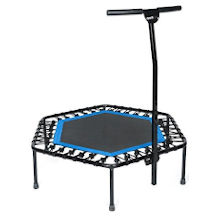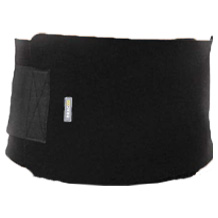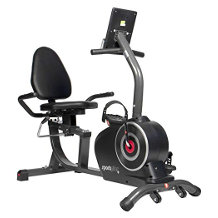Bike roller purchasing advice: how to choose the right product
- What You Need to Know
- Indoor cycling with a roller trainer involves using your own bike.
- Roller trainers to which the bike is stably attached are easier to use and offer variable resistance levels.
- Free roller trainers require a high degree of balance and body coordination, but reward you with a particularly realistic riding experience.
- Smart roller trainers adjust their resistance to the course of the track using simulation software. Some imitate downhill runs and different surfaces.
- If you put on a training tyre, you can even ride a mountain bike on a classic roller trainer.
When the weather doesn’t cooperate
Cyclists depend on regular training. This is the only way they can master marathon rides or achieve top performances in races. In icy temperatures and on soft or slippery ground, however, road cycling is not only unpleasant and dangerous, but also bad for the bikes: they are sensitive to moisture and salt. In winter, cyclists therefore like to train on a roller trainer in their own four walls.
Why a roller trainer?
Roller trainers are not only training devices for hard-core cycling fans. They are also suitable for anyone who wants to improve their fitness. In contrast to indoor bikes and exercise bikes, athletes train with a roller trainer on their own bike. Body posture and muscle strain are therefore almost the same as when cycling outdoors. Even a 30-minute workout is enough. While riding outside is interrupted by traffic lights and pedestrians, cycling on the roller trainer takes place without unwanted breaks.
Smart models enable comprehensive performance measurement and specialised, partly interactive training. Thanks to apps like Zwift, you can compete against cyclists from all over the world on virtual tracks. Furthermore, roller trainers are small and easy to store. Many models can also be folded up. This means they even fit in your luggage.
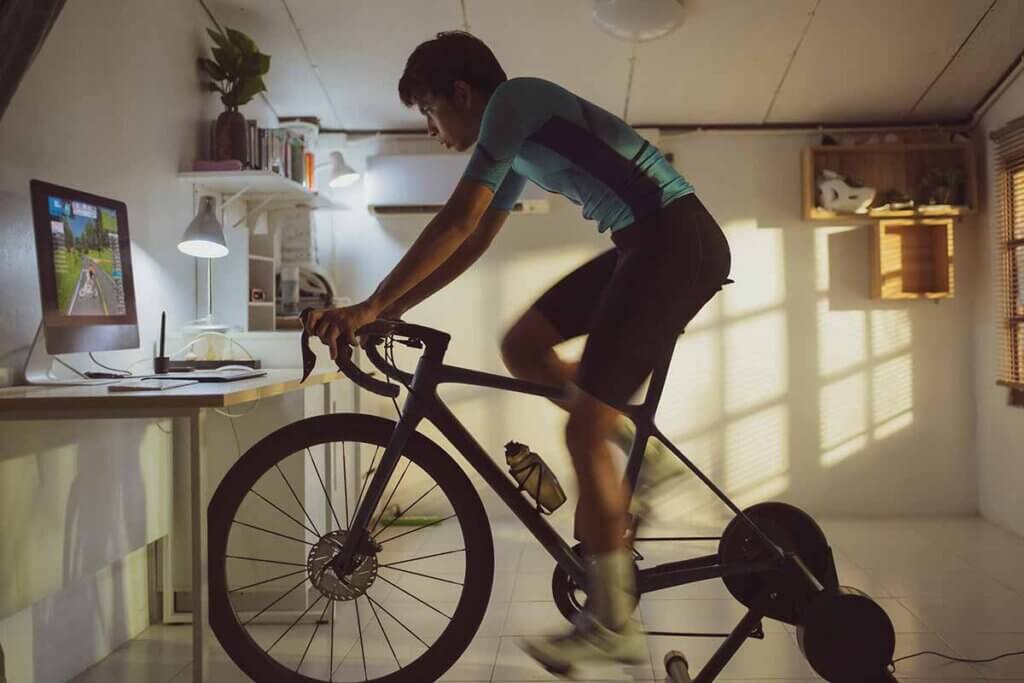
Types of roller trainers
There are three types of roller trainers, which differ in whether and how the bike is attached. The spectrum ranges from simple and inexpensive free rollers to comfortable smart trainers with direct drive.
Classic roller trainers
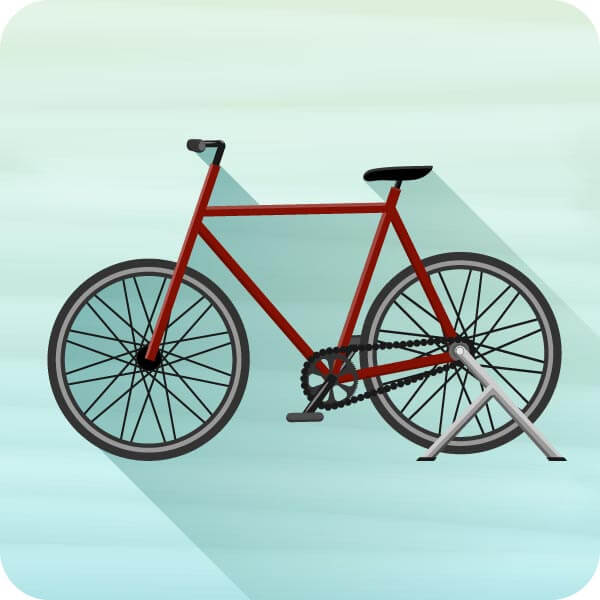
Classic roller trainers, also called wheel-on trainers, allow the rear wheel to be clamped in a holder so that the bicycle cannot move from the spot. While riding, the attached wheel rolls on a roller. The models have several resistance levels that can be adjusted either via a controller on the steering wheel or directly on the frame. Thanks to the easy assembly and use, roller trainers are ideal for beginners and occasional cyclists.
Roller trainer with direct drive
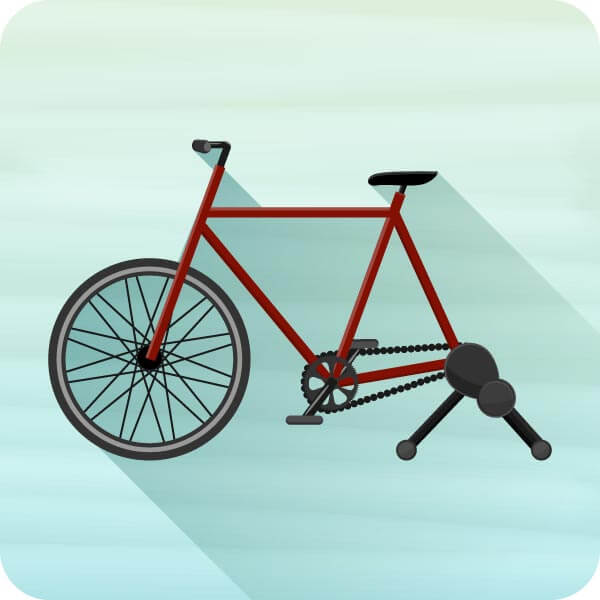
Direct-drive roller trainers are equipped with a flywheel. Users remove the rear wheel and install the flywheel of the roller trainer instead. They then pull the chain onto a standard cassette that they have previously mounted on the flywheel. Direct-drive trainers not only enable better power transmission than classic roller trainers, but are also quieter. Since they can be connected to smartphones and PCs, they are operated via app.
Free roller trainers
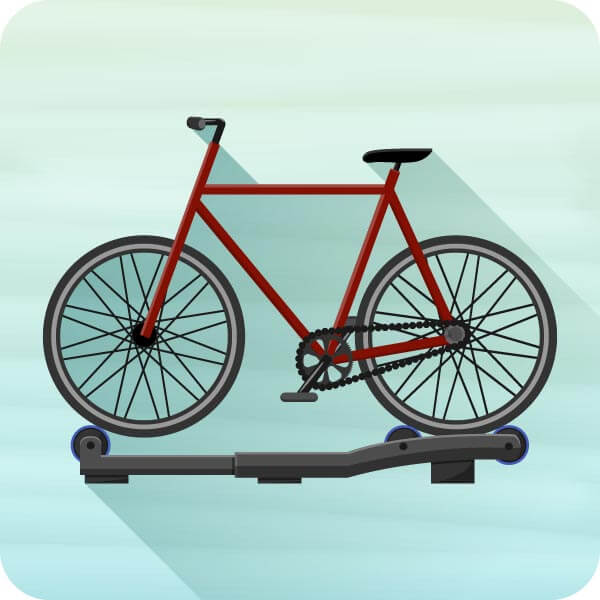
So-called free roller trainers consist of a rectangular frame and three support rollers. The front wheel is on one roller, while the other two rollers are subject to the rear wheel. “Free” means that the bike is not attached to the exerciser. With a few exceptions, free machines can only be used for training without resistance. Track cyclists sometimes use this variant for balance training. Due to the lack of attachment options, pedalling on free roller trainers is more difficult to learn than on fixed versions.
What to look for when buying a roller trainer
The choice of the ideal roller trainer depends in many respects on the intended use, but also on how varied you want to make your indoor cycling. Specific criteria such as resistance and weight can be derived from this.
Purpose
The purpose for which you want to use a roller trainer and the level of knowledge you have will basically determine which type is suitable for you. Inexperienced cyclists usually have difficulties keeping their balance on a free roller trainer. Ambitious cyclists, on the other hand, appreciate the natural feeling of riding. Since free rollers, with a few exceptions, do not allow use with resistance, neither hill climbs can be trained nor interval training can be carried out effectively. Instead, they support regeneration and endurance training.
Models where the bike is attached are suitable for cyclists as well as anyone who wants to improve their fitness. A luxury model with direct drive is not necessarily needed for fitness workouts; a classic roller drive is perfectly sufficient.
Smart or not smart
If you want to ride routes in faraway countries and compete with cyclists from all over the world without leaving your home, a smart roller trainer is ideal. Thanks to ANT+ and Bluetooth Smart, this model can be used with various training software as well as power meters. The prerequisite is that the receiving device, for example tablet or smartphone, uses the appropriate protocols. Roller trainers with direct drive are usually smart, whereas free models are not equipped with sensor and control technology. Both simple and smart variants are represented in roller drive versions.
Although direct-drive trainers offer the greatest innovations, such as the ability to simulate downhill runs, wheel-on trainers can already be used to ride virtual routes and record extensive measurement data. This includes cadence, speed and power. Smart trainers create a realistic riding experience by, for example, adjusting the resistance to the part of the track being ridden or even simulating road surfaces in line with the training software. It feels like you are actually riding the track.
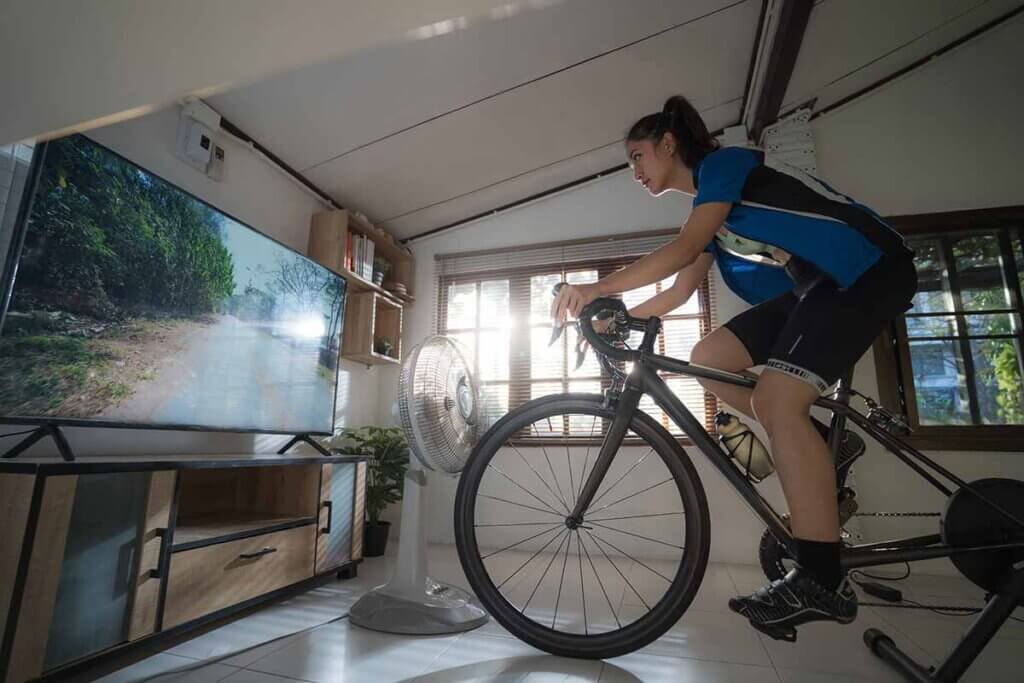
For a varied workout and accurate measurement of training success, smart models are better than analogue ones, but much more expensive. You can also achieve your training goals with analogue roller trainers. If you don’t want to do without measurement data, you can use separate cadence and speed sensors – the same devices that are used for training on the road. The sensor data collected can also be used by simulation programmes such as Zwift, so that cycling virtual routes is also possible with analogue roller trainers. However, the resistance cannot be adjusted with the app, which is why the riding experience is not as realistic as with smart trainers.
Compatibility with your own bike
Not every bike fits every roller trainer: although some manufacturers explicitly approve their bikes for roller trainers, you will find no indication of suitability on many of them. If you want to be sure that your expensive bike will remain undamaged when clamped in a trainer, you can write to the frame manufacturer.
For use with a wheel-on trainer, the bike must meet certain requirements, depending on the design. For wheel-on trainers, a quick-release rear axle or a suitable adapter is required. If you want to harness a mountain bike, you usually need either a training tyre or an old tyre without tread: Studded tyres either cannot be attached to the roller trainer in the first place or they at least wear down a lot. In addition, they generate a lot of noise when used on the roller. Tyres without tread are also recommended for free roller trainers, otherwise there are no restrictions except for a suitable wheelbase.
Roller trainers with direct drive are usually equipped with a freewheel system from Shimano, which is only compatible with the manufacturer’s eight- to eleven-speed drives and some SRAM drives. If your bike has, for example, a twelve-speed drive, SRAM XD or XDR freewheel cassettes, you will need an additional adapter. The wheel profile is irrelevant as the rear wheel is removed.
Resistance
On roller trainers with magnetic resistance, a metal plate rotates within a magnetic field. This design is typical for classic, analogue models. Depending on the roller trainer, the resistance levels can be adjusted either on the handlebars or directly on the brake unit of the roller trainer. The more levels there are, the more effective the training can be. In most cases, the resistance can be adjusted in up to seven modes.
Smart models that rely on an external power source to start operation use electromagnetic resistance. They work on the same principle as the magnetic version, except that electricity is needed. The adjustment of the rolling resistance is usually done via app. Some roller trainers, which allow you to ride on virtual tracks, adjust the resistance to the section of track you are riding.
The third type is fluid resistance, also called flow resistance. This is generated by the movements of a rotor, which is located in a fluid. In many cases, oil is used for this. The fluid resistance causes less driving noise than the magnetic resistance. However, it is only found on high-priced trainers.
Maximum gradient
For ambitious racers, the maximum simulated incline is relevant for a high training effect. The higher the percentage, the more power a cyclist has to exert to conquer the course. High-quality trainers simulate a gradient of up to 25 percent, which corresponds to an angle of 14.04. This may not seem like a high value. This may not sound like a high value, but on longer rides it is quite demanding. Often a gradient of around 15 percent or 8.53 degrees is sufficient.
Weight
The weight of the roller trainers differs greatly from one another: high-quality direct-drive trainers are the heaviest, often weighing more than 18 kilograms. This is mainly due to the flywheel. The more it weighs, the more natural the riding experience. Ideally, the flywheel should weigh at least five kilograms. If the roller trainer is only used in your own home, a high weight is not a problem.
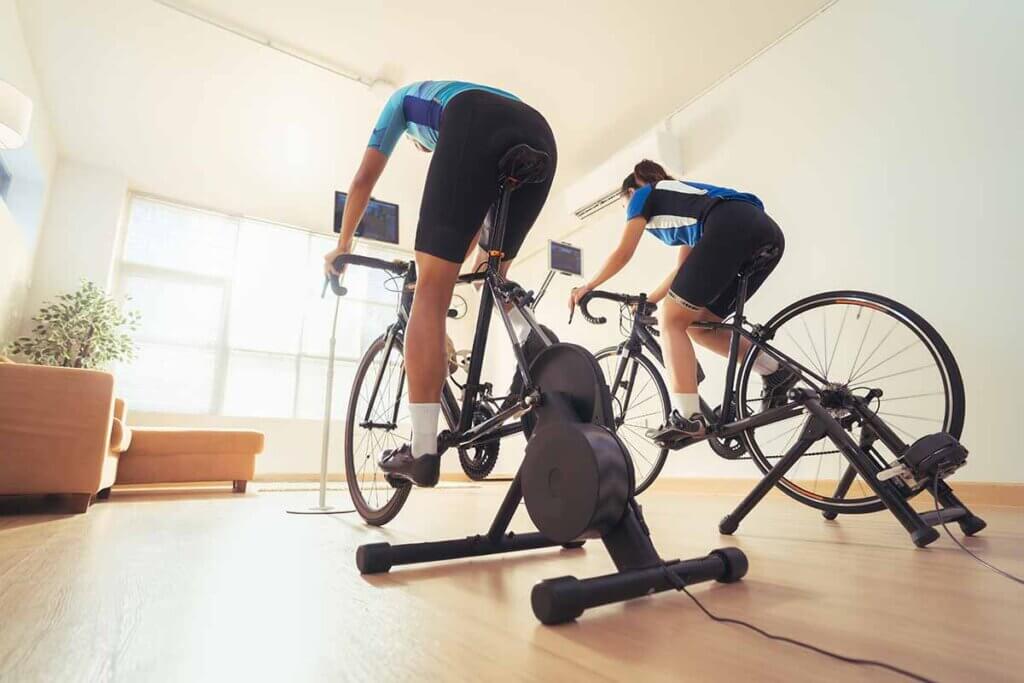
If, on the other hand, you want to take the roller trainer with you when you travel, you have to weigh up stability and transportability. Free roller trainers and wheel-on trainers weigh less than ten kilograms, so they are easier to transport. In addition to the weight of the roller trainer, also pay attention to the maximum load capacity. The training tool must be able to withstand your weight together with that of your bicycle.
Volume
The volume during training is caused by the chain noise on the bike, the contact between the tyre and the roller trainer and the vibration. If you ride slowly in a low gear, only the chain noise is usually audible: a conversation at room volume is quite possible while riding. The faster you ride, the more present all noise sources are. Driving with high resistance or at intervals causes the vibration to be transmitted to the floor. In apartment buildings with poor insulation, neighbours sometimes feel this strongly.
The quietest but most expensive roller trainers are those with direct drive. Apart from the fact that the noise level is lower without a rear wheel, some high-priced models are equipped with damping vibration systems or an encapsulated brake unit that further reduce the noise level. Regardless of which roller trainer you use: A suitable underlay mat reduces the noise level considerably.
Practical accessories
If you use a classic or free roller trainer, training tyres are almost mandatory for mountain or gravel bike riders: Their tyres not only wear out faster on the trainer, but they are also very loud due to the pronounced tread. Roller tyres are optimised for contact with the trainer: they are quieter to use and do not slip. Thanks to the special rubber compound, they also do not heat up as much as conventional road tyres, making them more durable than them. For these reasons, it makes sense to replace the high-quality road tyre with an indoor tyre, even though road tyres can be used with trainers.
Training mats protect the floor and trap the sweat that inevitably drips from your forehead during exercise. Sensitive surfaces such as laminate or wood cannot withstand the high load exerted by the trainer. Since the mats are usually made of foam or rubber, they dampen sound and vibrations that would otherwise disturb your neighbours.
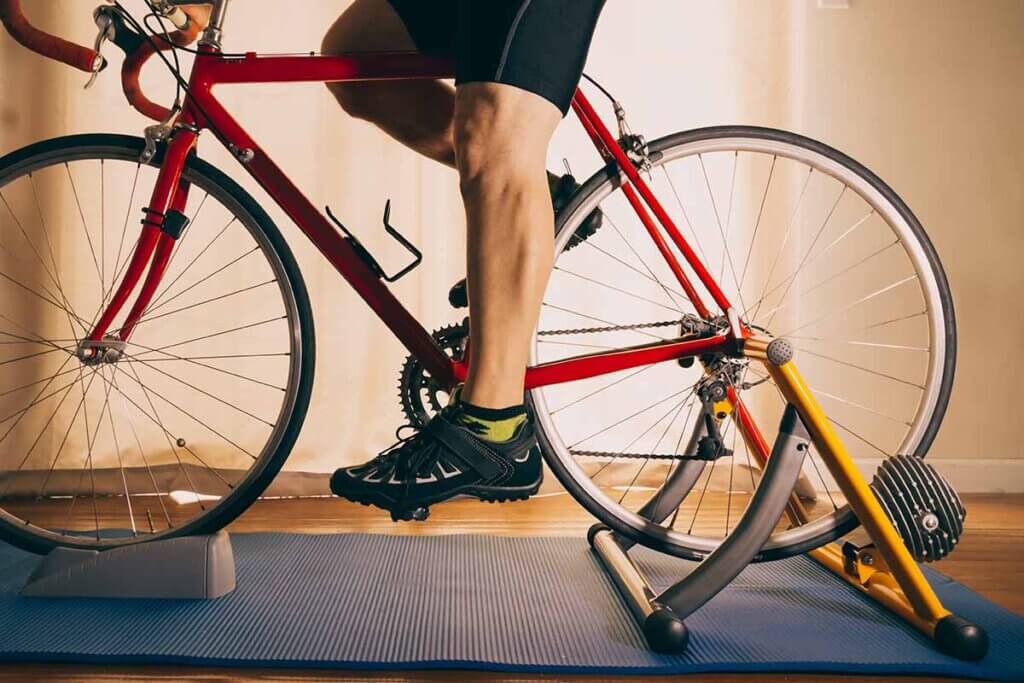
Front wheel supports are blocks that support the front wheel. By raising them, on the one hand a normal sitting position is possible, and on the other hand the tyre cannot slip. The accessory is particularly suitable for beginners as well as for all those whose Wheel-On trainers raise the rear wheel and thus prevent the usual sitting position.
During home training, there is no airstream to dry the sweat. As a result, drops of sweat keep falling onto the bike, which has a corrosive effect in the long run. To prevent this, you can mount a sweat catcher between the handlebar and the seat post. Some designs have an integrated smartphone pocket.
Fans provide a pleasant breeze and prevent you from overheating during training. You sweat less and perform better. If you place the accessory directly in front of you, it imitates the airstream. Special roller trainer fans can also be coupled with the roller trainer. This controls the ventilation based on the virtual route you are riding.

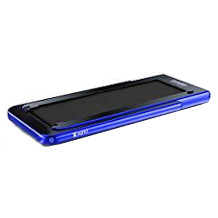
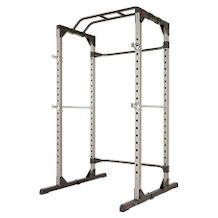
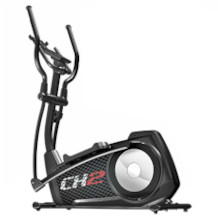
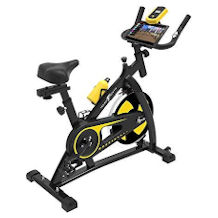
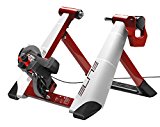

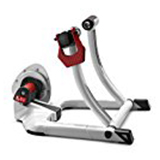
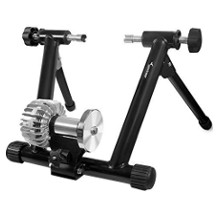
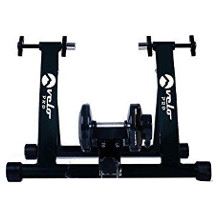
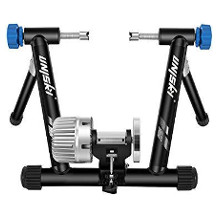
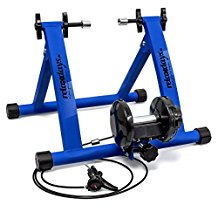
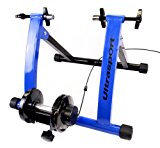
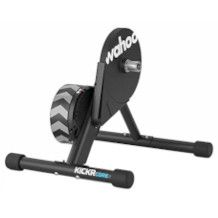
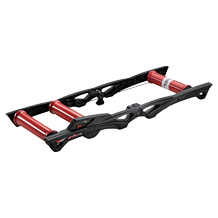

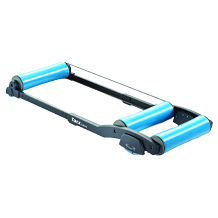
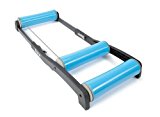
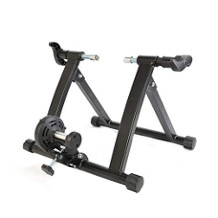
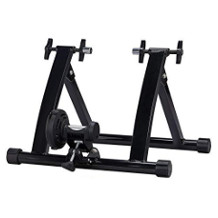
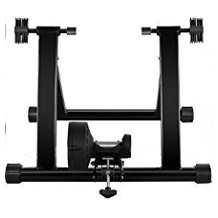
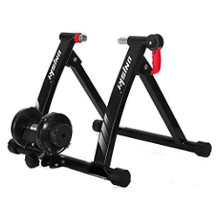
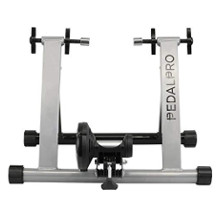

 3,524 reviews
3,524 reviews
